Are you a new puppy owner looking to crate train your 5-month-old furry companion? Look no further! Crate training 5 month old puppy is an essential skill that not only provides your pup with a safe space but also helps in house training and preventing destructive behaviors. By understanding your puppy’s development, implementing a well-planned schedule, and troubleshooting common issues, you’ll be well on your way to having a well-adjusted and crate-trained canine companion.
Key Takeaways from this Blog
- Gain an understanding of a 5-month-old puppy’s physical and behavioral development to effectively carry out crate training.
- Create a comfortable environment in the crate by providing cozy bed, blankets, toys and treats. Customize the process according to your pup’s needs & preferences for successful results.
- Monitor progress regularly during expansion of boundaries while graduating from crate training for safety & comfort as they become more independent.
Understanding Your 5-Month-Old Puppy
Before you start crate training, gaining a clear understanding of your 5-month-old puppy’s physical and behavioral development is crucial, along with their exercise and mental stimulation needs. This knowledge will enable a smoother and more effective crate training process.
Let’s delve into understanding 5-month-old young puppies and how we can use their unique characteristics to ensure successful crate training.
Physical Development
At 5 months old, puppies undergo significant physical changes, including teething and reaching their adult size. It’s important to take these changes into account when crate training, as they can impact your puppy’s comfort and willingness to use the crate. For instance, teething can cause discomfort for your pup, so providing appropriate chew toys and frozen treats can help alleviate pain and create positive associations with the crate.
When selecting a dog crate, consider the typical weight and height of a 5-month-old puppy, which ranges between 25 to 50 pounds and 10 to 20 inches at the shoulder depending on breed. A crate of appropriate size is vital for your puppy’s comfort, as it should allow them to stand, turn around, and lie down easily. As your puppy grows, their bladder control may also improve, resulting in fewer bathroom breaks while in the crate.
Behavioral Development
5-month-old puppies exhibit increased independence and curiosity, which can affect the efficacy of crate training. However, with consistent training and positive reinforcement, your puppy can become an adult dog that is comfortable and well-adjusted in their crate, even in a household with dogs cats.
Your puppy’s independence and curiosity play a significant role in helping them get used to their crate and perceive it as a secure environment. Offering a few treats as a reward for entering the crate can create positive associations and encourage your puppy to explore their new space. It’s important to place one dog per crate to ensure each puppy has their own space and feels secure.
Make sure to leave the crate door open during the initial stages of crate training to help your puppy feel more comfortable and secure. In case your puppy whines at night in the crate, it’s recommended to identify and identify the cause.
While some pet experts advocate for letting puppies “cry it out” to avoid reinforcing attention-seeking behavior, it’s essential to strike a balance. If your puppy has been whining for more than 10-15 minutes, it’s a good idea to check on them.
Ensure they don’t need a potty break or aren’t experiencing any discomfort. If all their needs are met, you can try letting them self-soothe for a while longer, but always use your judgment. Prolonged distress can be harmful and counterproductive to building trust.
Exercise and Mental Stimulation Needs
Your 5-month-old puppy needs plenty of exercise and mental stimulation to facilitate a smooth crate training process. A well-exercised and mentally stimulated puppy is more likely to adapt to crate training and less prone to destructive behaviors.
Before crating your puppy, provide them with 30 to 60 minutes of aerobic exercise. Taking your puppy out for a potty break before crate time is also crucial, as younger dogs lack the bladder capacity of adult dogs.
Engage your pet’s mind with activities such as puzzle toys, obedience training, or interactive games. This will not only provide mental stimulation but also help to build the bond between you and your pet. These activities will help keep your puppy’s mind sharp and engaged, promoting a smoother crate training experience.
Crate Training Basics for a 5-Month-Old Puppy
Having grasped your 5-month-old puppy’s needs, we can now delve into the basics of crate training. This includes choosing the right crate size and creating a comfortable environment. By mastering these fundamentals, you’ll be well-prepared to crate train your puppy effectively.
Choosing the Right Crate Size
Choosing the right crate size is vital to ensure your 5-month-old puppy’s comfort and safety during crate training. The crate should be roomy enough for your puppy to move about freely. It should provide ample space for it to stand, lie down, and turn around..
There are various types of crates available, such as wire crate, plastic crates, and mesh crates. An overly large crate may lead to your puppy using one area for sleeping and another for eliminating, which is counterproductive to house training. Take your puppy’s weight, height, and growth rate into consideration when choosing a crate size.
Creating a Comfortable Environment
The key to successful crate training is creating a cozy and inviting environment inside the crate. This will encourage your puppy to feel secure and relaxed, making the crate training process more enjoyable and effective.
Start by placing a comfortable bed, blankets, and your puppy’s favorite toy inside the puppy’s crate. Make the crate even more appealing by using treats as a reward for entering the crate and creating positive associations with it. Gradually introduce your puppy to the crate, allowing them to explore it at their own pace.
Remember, patience and consistency are vital when crate training your 5-month-old puppy. By creating a welcoming environment, you’ll be one step closer to having a crate-trained and well-adjusted canine companion.
Customizing the Crate Training Process
Each puppy is unique, and so the approach to their crate training should be. Customizing the process by adjusting crate time, addressing separation anxiety, and integrating socialization will optimize your puppy’s crate training success. By doing so, you’ll be able to cater to your 5-month-old puppy’s individual needs and preferences, ensuring a smooth and positive crate training experience.
Adjusting Crate Time
To adjust crate time for your 5-month-old puppy, begin by crating them for two to three hours during the day and six to eight hours at night. It’s important to gradually increase crate time as your puppy becomes more comfortable and gains bladder control.
Take your puppy out of the crate every 2-4 hours during the day for bathroom breaks and exercise. Ensure your puppy receives adequate mental stimulation and exercise outside of the crate to help them adjust to the crate training schedule.
Dealing with Separation Anxiety
Separation anxiety can be a common issue for puppies during crate training. To address this concern, use positive reinforcement to encourage calm behavior and gradually increase crate time. Only consider crating your puppy when you leave home after they have demonstrated contentment in the crate while you are out of the room.
Socialization and Crate Training
Incorporating socialization into the crate training process is vital for helping your puppy become well-adjusted and confident. Teaching your puppy to “wait” or “stay” before opening the crate door can be a valuable skill that prevents them from hastily exiting the front door of your house or jumping out of a car door.
Adequate socialization enables your puppy to become accustomed to different stimuli and situations, helping them feel more at ease and secure in their crate. By combining crating with socialization, you’re laying the foundation for a well-rounded and confident canine companion.
Crate Training Schedule for a 5-Month-Old Puppy
Setting up a crate training schedule is vital to assist your 5-month-old puppy in adapting to their new routine. By establishing consistent daytime and nighttime routines, you’ll ensure your puppy is well-rested, well-exercised, and comfortable in their crate.
Daytime Schedule
For a successful daytime schedule, crate your puppy for two to three hours at a time. To keep your puppy happy and well-adjusted, feed them three meals a day at breakfast, lunch, and dinner.
Provide your puppy with potty breaks every 4-6 hours during crate training. Incorporate playtime and exercise before crate time, allowing your puppy to expend energy and engage in mental stimulation.
Nighttime Schedule
Maintaining a regular nighttime routine is key to ensure your 5-month-old puppy sleeps throughout the night with minimal disturbances. Crate your puppy for six to eight hours at night, making sure to take them out for a toilet break before bedtime to promote healthy puppy sleep.
In case your puppy whines during the night, take them out to pee but avoid playtime to facilitate a quicker return to the crate afterwards. With patience and consistency, your puppy will soon adjust to their nighttime routine and sleep peacefully in their crate.
Below is a sample routine for potty training a two month old puppy. For a 5 month old, they will be able to hold their bladder longer at night (possibly up to six hours), so adjust the routine accordingly. Also, your 5 month old will be able to spend more time outside the crate for playtime, exploration, and socialization.
Troubleshooting Common Crate Training Issues
Like any training process, you might face some common crate training issues. Fear not; you’re not alone! Tackling these issues directly and employing effective strategies will help you overcome any challenges and successfully crate train your 5-month-old puppy.
Excessive Whining or Barking
Excessive whining or barking during crate training can be frustrating, but it’s important to remain patient and consistent. To address this issue, establish a calming environment by playing soothing music or using white noise. Ignore your puppy’s whining and avoid rewarding them with attention or releasing them from the crate when they whine.
Gradually increase crate time and ensure your puppy receives plenty of exercise and mental stimulation outside of the crate. By following these strategies, your puppy will eventually learn to remain calm and quiet in their crate.
Accidents in the Crate
Accidents in the crate can be frustrating and messy, but they’re not the end of the world. Clean up accidents promptly using an enzymatic cleaner to eliminate any remaining odors. If your puppy is having frequent accidents in the crate, ensure they receive adequate exercise and mental stimulation outside of the crate.
Monitor your puppy’s diet, as abrupt changes in their food may result in more frequent bowel movements or irregular potty habits. By addressing these factors, you’ll be able to prevent accidents in the crate and keep your puppy’s living space clean and comfortable.
Resistance to Crate Training
If your puppy is resistant to crating, don’t lose hope! Here are some tips to help you:
- Exercise patience and consistency.
- Reward your puppy for good behavior and provide positive reinforcement.
- Gradually increase the amount of time your puppy spends in the crate.
- Provide your puppy with adequate exercise and mental stimulation outside of the crate.
By following these tips, you can help crate train a puppy and make them more comfortable with crate training.
By following these strategies, your puppy will eventually overcome their resistance to crate training and become more comfortable and secure in their crate.
Graduating from Crate Training
After the successful completion of crate training, your 5-month-old puppy can gradually transition into enjoying more freedom at home. By expanding boundaries and monitoring progress, you’ll be able to help your puppy grow into a well-adjusted adult dog that feels secure and confident in their environment.
Expanding Boundaries
To safely introduce your 5-month-old puppy to new areas of the house, start by puppy-proofing your home, creating a designated area for them, and using baby gates or furniture to block off unsafe areas. Introduce your puppy to new areas gradually, starting with one room at a time, and supervise them closely to ensure their safety.
Establish rules and boundaries early on to ensure good behavior and maintain control as your new puppy explores their newfound freedom.
Monitoring Progress
Monitoring your puppy’s progress and behavior is vital as they transition from crate training to gaining more independence at home. Keep a close eye on their potty training, comfort level with the crate, and any destructive behavior they may exhibit.
By closely observing your puppy’s progress, you can make informed decisions about their level of freedom and adjust their boundaries accordingly. Remember, consistency and reinforcement are key to maintaining good behavior as your puppy explores their new environment.
Summary
Crate training your 5-month-old puppy may seem like a daunting task, but with patience, consistency, and a well-planned approach, you can achieve success. By understanding your puppy’s needs, implementing a crate training schedule, customizing the process, and troubleshooting common issues, you’ll be well on your way to raising a well-adjusted and crate-trained canine companion. So, grab your treats and toys, and embark on this exciting journey together!
Frequently Asked Questions
Can you still crate train a 5 month old puppy?
At any age, you can train a dog to become comfortable with their crate. However, for puppies under 6 months of age it is important to limit the time spent in the crate as they cannot control their bladders and bowels for long periods of time.
How do you crate train a 5 month old puppy at night?
To crate train a 5 month old puppy at night, stop all eating and drinking a few hours before bed, make sure the pup is ready for sleep, take them out before bedtime, avoid food and water before bedtime, wear the puppy out, go outside immediately before bedtime, don’t play with your puppy at night, wake up before your puppy, and be consistent and patient.
At what age is it too late to crate train a puppy?
It is never too late to crate train a puppy, as dogs can be crate trained at any age. To ensure successful crate training, it is recommended to start when the pup is 8 weeks old or as soon as they are brought home.
Why does my puppy cry in his crate at 5 months?
At 5 months old, your puppy may be crying in his crate due to feelings of loneliness or confinement, as they may not yet be used to being in such an enclosed space. It could also be caused by boredom, fear, or anxiety.
What types of crates are available for crate training a 5-month-old puppy?
Wire, plastic, and mesh crates are all suitable options for crate training a 5-month-old puppy.



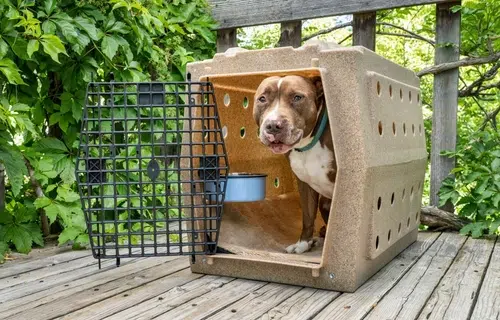


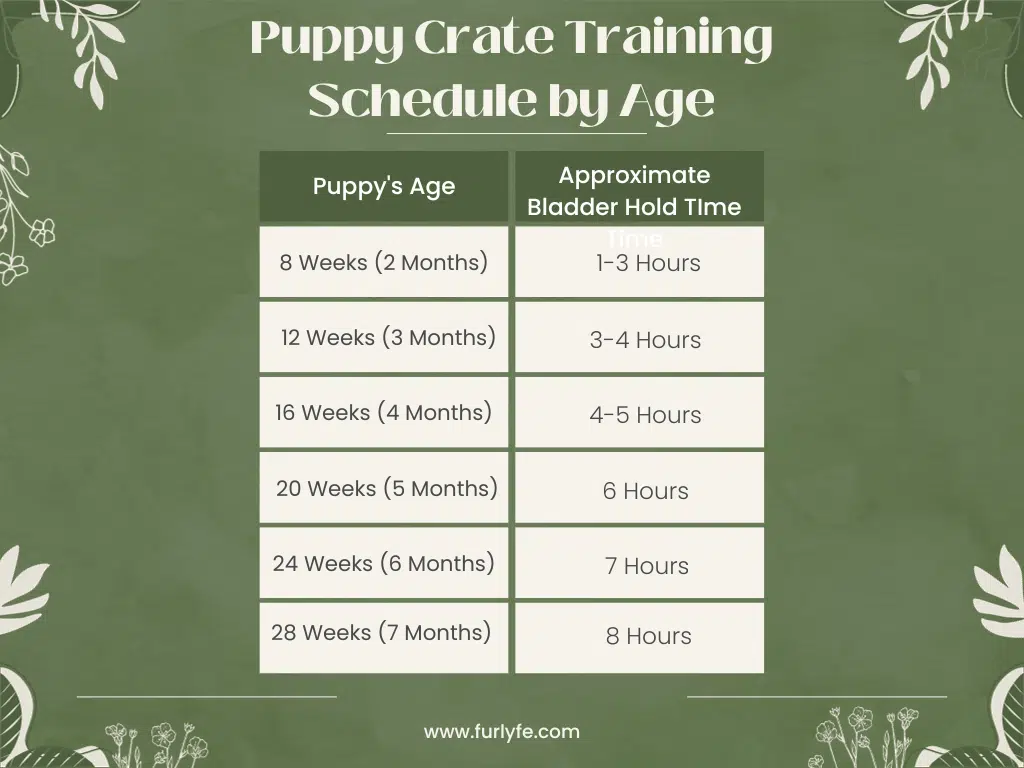
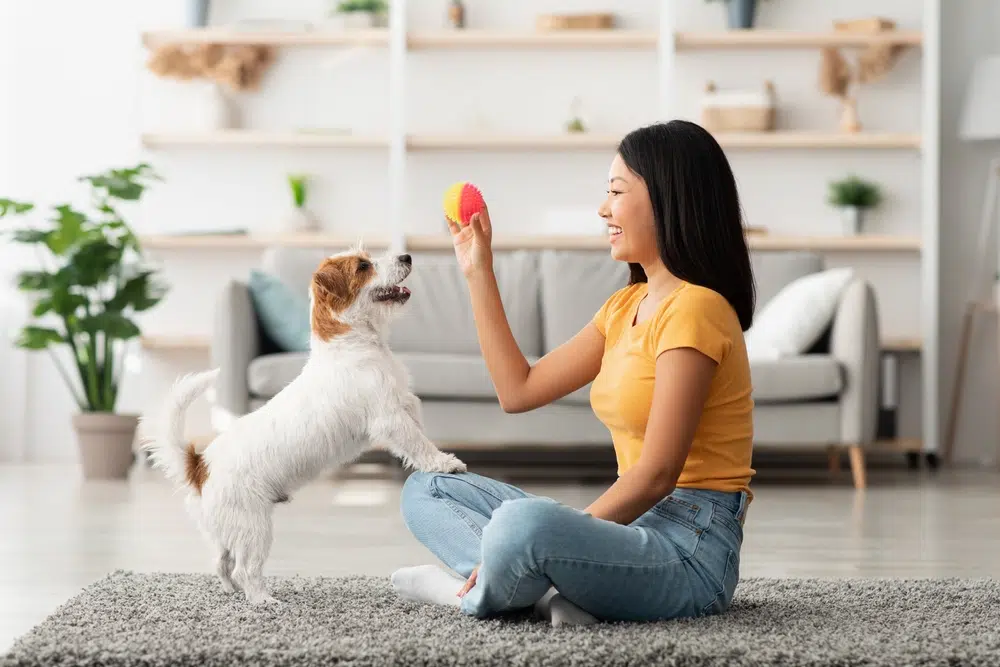
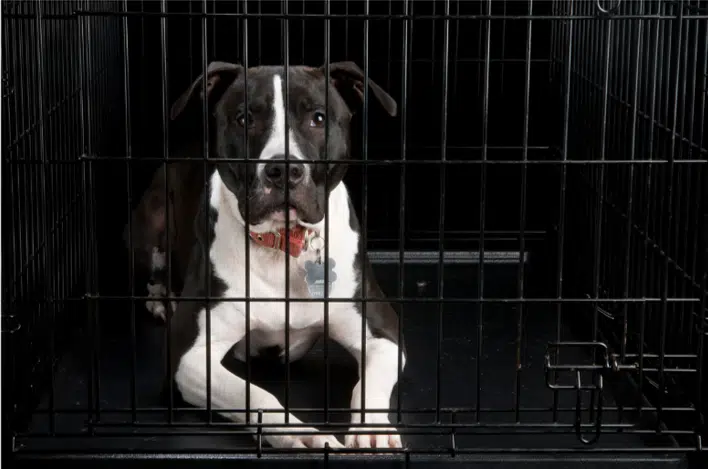






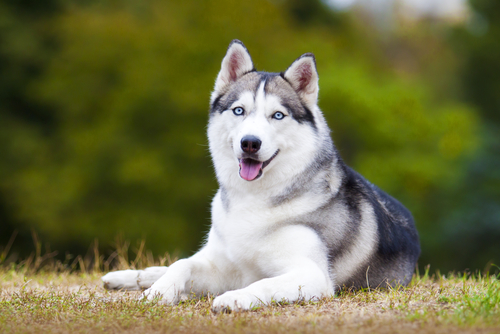

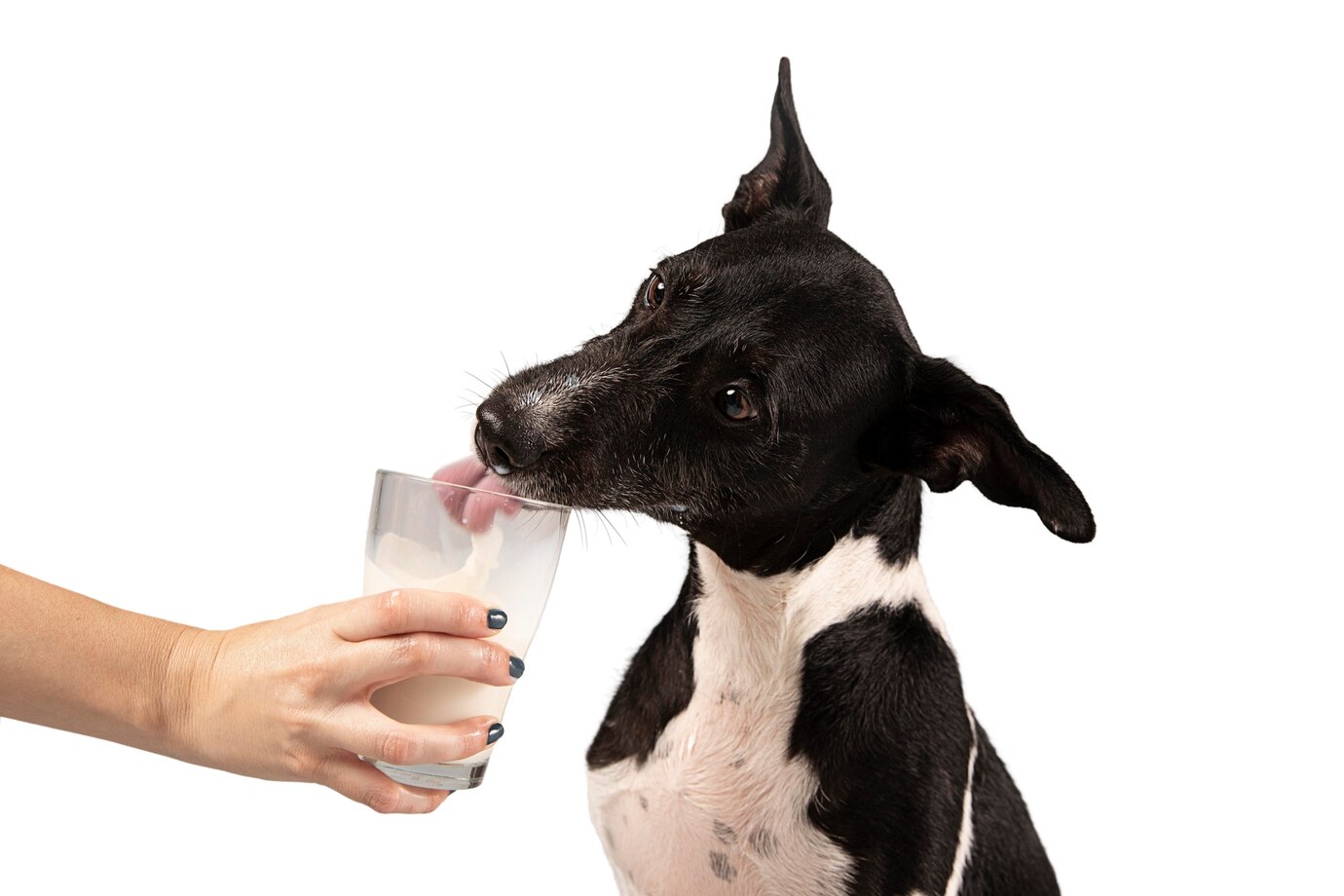

Get involved!
Comments